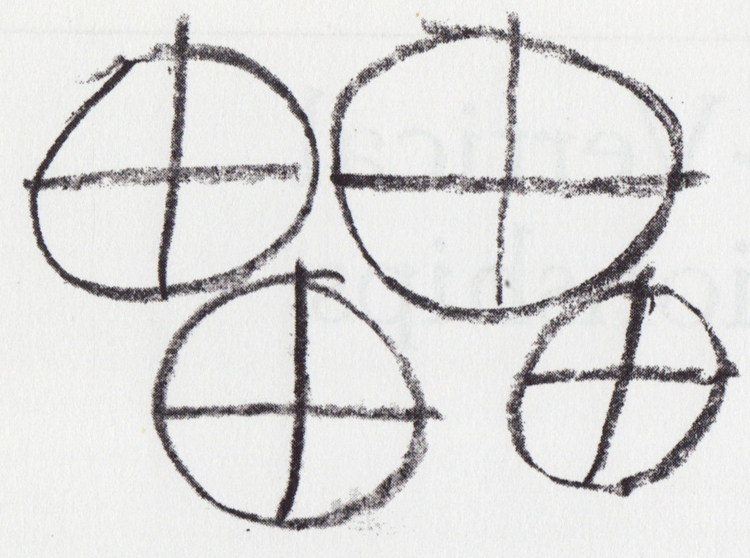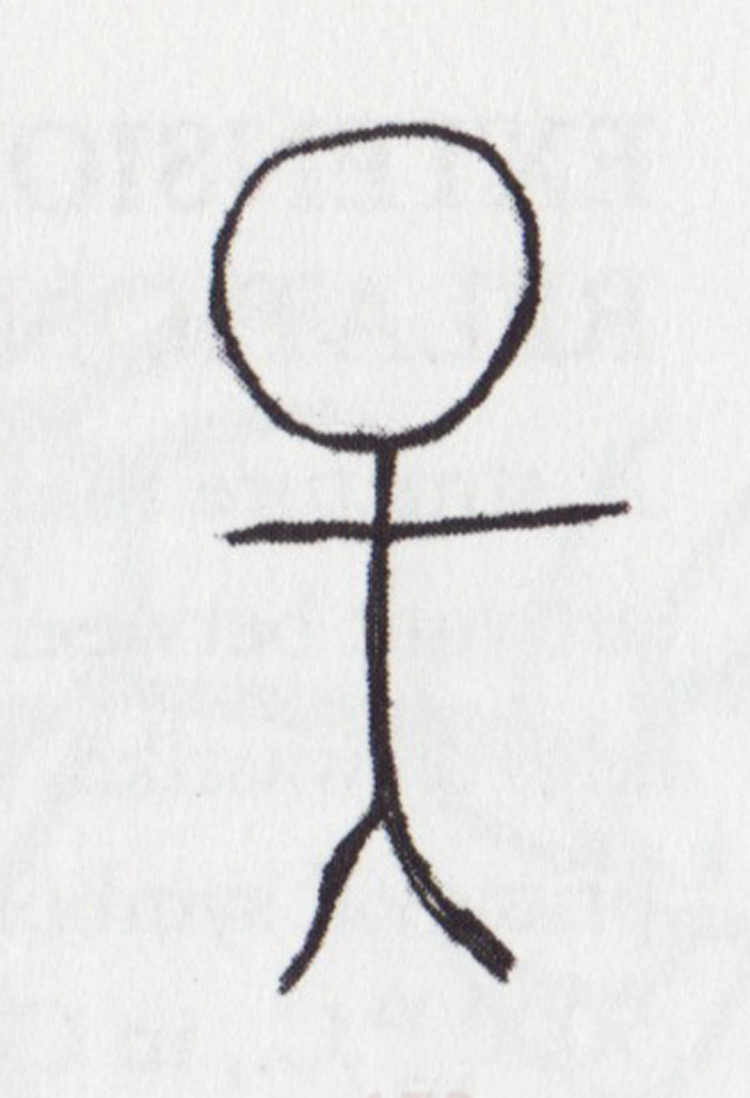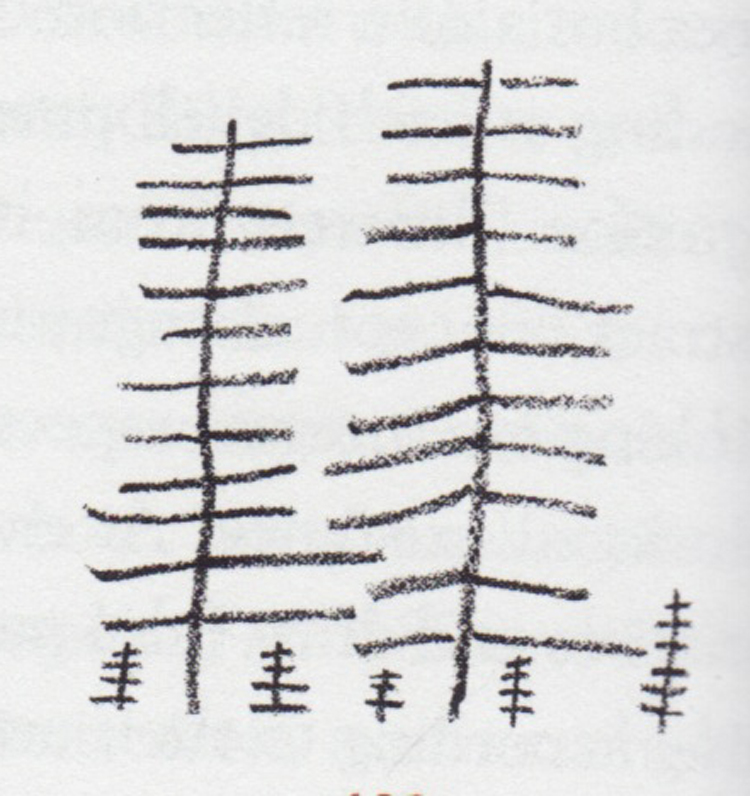"the mandala or circle image seems to be the predominant one in young children who are first learning how to draw. Initially a two-year-old with a pencil or crayon just scribbles, but soon (s)he seems to be attracted by the intersection of lines and begins to make crosses. Then the cross is enclosed by a circle and we have the basic pattern of the mandala. As the child attempts to do human figures, they first emerge as circles, contrary to all visual experience, with the arms and legs being represented only as ray-like extensions of the circle. . ."
". . .indicating that the young child experiences the human being as a round, mandala-like structure and verifies in an impressive way the psychological truth of Plato's myth of the original round man. Child therapists also find the mandala an operative, healing image in young children. All of this indicates that, symbolically speaking, the human psyche was originally round, whole, complete ; in a state of oneness and self-sufficiency that is equivalent to deity itself. . ."
". . . The same archetypal idea that connects childhood with nearness to deity is presented in Wordsworth's 'Ode on Intimations of Immortality' :
Our Birth is but a sleep and a forgetting :
The Soul that rises with us, our life's Star,
Hath had elsewhere its setting,
And cometh from afar:
Not in entire forgetfulness,
And not in utter nakedness,
But trailing clouds of glory do we come
From God, who is our home:
Heaven lies about us in our infancy !
From the standpoint of later years, the close connection of the child's ego with divinity is a state of inflation. Many subsequent psychological difficulties are due to residues of that identification with deity. Consider, for instance, the psychology of the child in the first five years or so. On one hand it is a time of great freshness of perception and response; the child is in immediate contact with the archetypal realities of life. It is in the stage of original poetry; magnificent and terrifying transpersonal powers are lurking in every commonplace event. But on the other hand the child can be an egotistic little beast, full of cruelty and greed. Childhood is innocent but it is also irresponsible. Hence, it has all the ambiguities of being firmly connected with the archetypal psyche and its extra-personal energy, and at the same time being unconsciously identified with it and uncharacteristically related to it. . ."
". . .Children share with primitive man the identification of ego with the archetypal psyche and ego with outer world. With primitives, inner and outer are not at all distinguished. For the civilized mind, primitives are most attractively related to nature and in tune with the life process ; but they are also savages and fall into the same mistakes of inflation as do children. Modern man, alienated from the source of life meaning, finds the image of the primitive an object of yearning. This accounts for the appeal of Rousseau's concept of the 'noble 'savage' and other more recent works which express the civilized mind's nostalgia for its lost mystical communion with nature. This is one side, but there is also a negative side. The real life of the primitive is dirty, degrading, and obsessed with terror. We would not want that reality for a moment. It is the symbolical for which we yearn.
When one looks back on his psychological origin, it has a two-fold connotation : first, it is seen as a condition of paradise, wholeness, a state of being at one with nature and the gods, and infinitely desirable ; but secondly, by our conscious human standards, which are related to time and space reality, it is an inflated state, a condition of irresponsibility, unregenerate lust, arrogance, and crude desirousness. The basic problem of the adult is how to achieve the union with nature and the gods, with which the child starts, without bringing about the inflation of identification. "
:
Edward f. edinger
_Ego and Archetype_
( c. 01972 )



























































